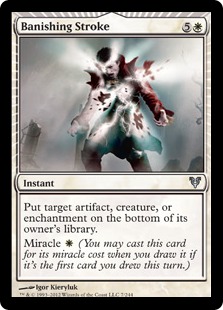
Inspired by Mimicking Mother Nature: Reading Nature’s Answers
There is a profound wisdom that can be found in observing the intricate workings of Mother Nature. From the symbiotic relationships between plants and pollinators to the resilience of ecosystems in the face of adversity, nature offers a wealth of knowledge waiting to be uncovered. By mimicking the patterns and processes found in the natural world, we can gain valuable insights that can guide us in solving complex challenges and creating sustainable solutions.
The Wisdom of Biomimicry
Biomimicry is a discipline that looks to nature for inspiration in design, engineering, and innovation. By studying the remarkable adaptations and strategies that have evolved over millions of years, researchers and innovators have been able to develop cutting-edge technologies and solutions that are efficient, sustainable, and harmonious with the environment.
Learning from Nature’s Solutions
One example of biomimicry in action is the development of Velcro, a fastening mechanism inspired by the way burrs attach to the fur of animals. By studying the tiny hooks on the surface of burrs, Swiss engineer George de Mestral was able to create a simple yet effective fastening system that revolutionized the world of textiles and design.
Another fascinating example is the design of high-speed trains based on the shape of the beak of a kingfisher. By mimicking the aerodynamic profile of the bird’s beak, engineers were able to reduce noise and turbulence, making trains more efficient and eco-friendly.
Applying Nature’s Patterns to Technology
From advanced materials inspired by the structure of seashells to self-healing materials modeled after the regenerative abilities of living organisms, the possibilities for biomimicry are endless. By harnessing the wisdom of nature, we can create a more sustainable and resilient future for generations to come.
Unlocking Nature’s Secrets through Observation
One of the key principles of biomimicry is the importance of careful observation. By closely studying how organisms interact with their environment and adapt to challenges, we can gain insights that can inform our own design and innovation processes. Nature has already solved many of the problems we face; we just need to pay attention and learn from its solutions.
Lessons from Resilient Ecosystems
Resilient ecosystems provide valuable lessons in adaptation and sustainability. By studying how diverse species coexist and thrive in dynamic environments, we can learn valuable lessons in collaboration, diversity, and resilience. Nature has a way of balancing competing interests and maintaining harmony – a lesson that can inform our own societal structures and systems.
Innovating with a Nature-Inspired Mindset
As we face unprecedented challenges such as climate change, loss of biodiversity, and resource depletion, it is more important than ever to look to nature for inspiration and guidance. By cultivating a nature-inspired mindset and seeking answers in the wisdom of the natural world, we can unlock innovative solutions that are in harmony with the planet and its inhabitants.
In Conclusion
By embracing the principles of biomimicry and learning from the wisdom of Mother Nature, we can unlock a world of sustainable solutions and innovative possibilities. From efficient design to regenerative technologies, the answers to our most pressing challenges may already exist – we just need to look to nature to find them.
Frequently Asked Questions
What is biomimicry?
Biomimicry is a discipline that looks to nature for inspiration in design, engineering, and innovation. By studying the remarkable adaptations and strategies found in the natural world, researchers and innovators can develop cutting-edge technologies and solutions that are efficient and sustainable.
Why is biomimicry important?
Biomimicry offers a sustainable approach to innovation by harnessing the wisdom of nature. By mimicking the patterns and processes found in the natural world, we can create solutions that are in harmony with the environment and resilient in the face of challenges.
What are some examples of biomimicry in action?
Examples of biomimicry include Velcro, inspired by the way burrs attach to animal fur, and high-speed trains designed based on the aerodynamic profile of a kingfisher’s beak. These innovations showcase how nature’s designs can inspire practical solutions in technology and design.

Source Image: pinterest.com

Source Image: ieltsxpress.com
82 Mother Nature ideas | mother nature, mother earth, nature Dear students, here are the IELTSFever Academic IELTS Reading Practice Test 135 Answers ( Passage 1 New agriculture in Oregon, US, Passage 2 Inspired by Mimicking Mother Nature, Passage 3 The Secrets of Persuasion)










